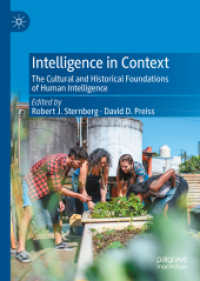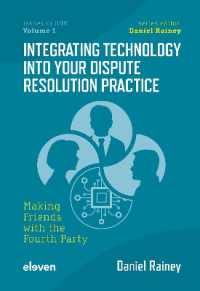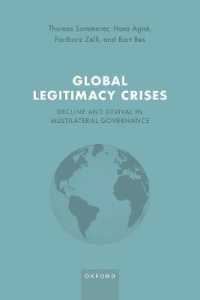- ホーム
- > 洋書
- > 英文書
- > Business / Economics
Full Description
This book uses the case of Chinese development in Laos to ask what development is and why it happens as it does.
Development may seem self-evidently positive, but it is fraught with different agendas and seemingly competing visions of what so-called developing countries should become and how they should get there. As a country soon to graduate from Least Developed Country status as defined by the United Nations, Laos is a rich case study for considering the shifting drivers and priorities for development. This book considers how the rapid arrival of China has brought visions of development which converge and contest what has gone before, and how these inform individual and collective aspirations on the ground in Laos. This book starts by situating China's Belt and Road Initiative and development priorities, before going on to consider what the rise of China in Laos really means for agendas of change and for individual aspirations. This book concludes that China is changing ideas of future making and visions of what a developed society looks like, but not yet altering a long-standing preoccupation with the very notion of development itself. Based on many years of original on the ground research in Laos, this book moves beyond macro scholarship on China's influence to provide a nuanced picture of what Global China means and what development, aspiration, and future building mean in a changing Laos.
It will be a thought-provoking read for researchers across the fields of global development and Asian studies.
Contents
Contents List of figures ix
List of maps xi
Preface - Development is the future xiii
Acknowledgements xix
Author's note xxi
List of acronyms and abbreviations xxiii
PART I
The inevitability and allure of development 1
1 Development as (a) given 3
2 "Development is roads" - infrastructures, desires, and debts 30
PART II
Land and (im)mobility 55
3 Development means change: ambivalent - and
inevitable - encounters with China 57
4 Express train to the good life: all aboard the Laos‑
China Railway 79
PART III
Aspiring (with) China 95
5 Making aspirations move: future building in a
changing Laos 97
6 "They cannot buy the land, but they will own the land":
coming to terms with China in Laos 116
PART IV
Conclusion 137
7 Conclusion: future building: possibility, pragmatism,
and price 139
Index 153








